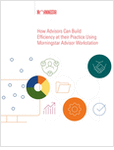There are multiple economic and financial numbers investors can monitor in 2018 to get a sense of the market environment. David Kelly, chief global strategist for JPMorgan Funds, offers his own list of the top 10 data points he recommends investors watch this year.
In his inaugural weekly note for 2018, Kelly says the list is his answer to a question he gets asked most often: “whether there is any one number which I track to get a sense of the investment environment … The answer is no — the economy and markets are honestly a little too complicated for that.”
1. GDP growth. Kelly expects real GDP, which is adjusted for inflation and grew 3.1% and 3.2% in the second and third quarters of 2017, will finish 2018 up 3%, comparing Q4 2018 to Q4 2017. (The initial Q4 GDP won’t be released until Jan. 26 and the final number will be out March 28.)
Kelly expects a pickup in growth in early 2018 from a slowed 2.5% rate in the fourth quarter of 2017, then another tapering later in the year “due to a lack of pent-up demand among consumers and real difficulty in finding workers, which could limit both consumer and investment spending.” He anticipates just 2% growth in 2019.
2. Unemployment. If 3% real GDP growth is achieved in 2018, the U.S. unemployment rate could fall to 3.4% by the end of 2018. That would be the lowest rate since 1969, the year of the first moon landing, Woodstock music festival and the start of Richard Nixon’s first term as president of the U.S.
3. Wages. Despite a very low unemployment rate currently – 4.1% in November, reported in the latest available data – U.S. wages have been growing slowly. (Kelly expects the next jobs report, due Friday, will show hourly wage growth under 2.5% year over year). “Some acceleration is likely in 2018, with year-over-year wage gains possibly heading to 3% by the end of the year,” writes Kelly.
4. Federal funds rate. Kelly expects the Federal Reserve will stick to its plan to reduce its balance sheet, which is already underway, and raise short-term rates at least three times in 2018. But if growth is stronger and unemployment is lower than the Fed has projected for 2018 — which is 2.5% for GDP year over year and 3.9% by Q4 2018 — then the Fed could hike rates four times in 2018, writes Kelly.
5. Long-term rates. “It is remarkable how low long-term yields have stayed despite a clearly improving global economy and Fed tightening,” writes Kelly, noting that the 10-year Treasury yield ended 2017 at 2.4%, down 5 basis points from the end of 2016.








 January 02, 2018 at 09:35 AM
January 02, 2018 at 09:35 AM










